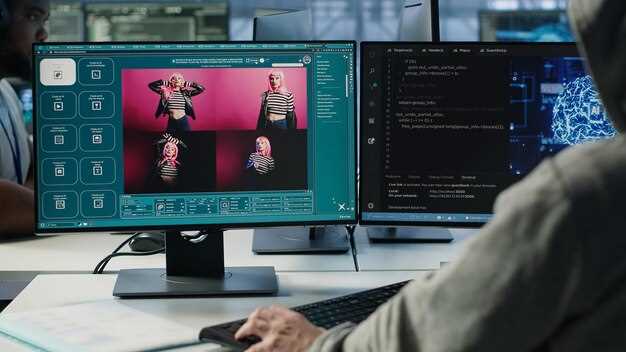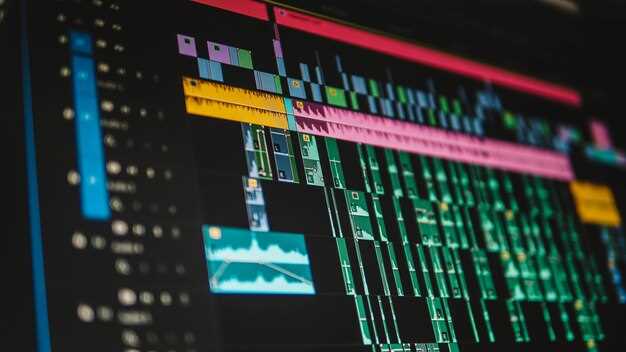

In today’s digital landscape, the integration of video and data overlay systems has become crucial for various industries, from broadcasting to sports analytics. These systems allow organizations to visualize critical information in real-time, enhancing the viewer’s experience and providing deeper insights into data through telemetry metrics. Understanding how to effectively set up and manage these overlays can make all the difference in achieving operational excellence and audience engagement.
Successful implementation of video and data overlay systems involves several key components. First, it is essential to choose the right software and hardware that can handle the specific requirements of your project. This includes ensuring compatibility with existing infrastructure while allowing for scalability as needs evolve. Secondly, clarity in design and information presentation is paramount. Overlays must not only be visually appealing but also convey data in a concise manner, preventing information overload for the audience.
Moreover, integrating telemetry data into overlays can significantly enhance the value of live broadcasts or recorded content. By combining real-time analytics with video, organizations can provide viewers with insights that are both informative and engaging. When done correctly, the synergy between these elements can drive higher audience retention and satisfaction, ultimately leading to greater success.
Choosing the Right Software for Video Overlay and Telemetry Integration

Selecting the appropriate software for video overlay and telemetry integration is essential for achieving optimal performance in any project involving real-time data visualization. The right software can enhance user experience, improve data accuracy, and facilitate decision-making processes.
Key Features to Consider:
Firstly, ensure the software supports a wide range of video formats. Compatibility with various file types enables seamless integration of existing media and ensures flexibility in future projects. Additionally, look for tools that allow customization of overlays, giving you control over the visual representation of data.
Secondly, assess the ability to manipulate and synchronize data feeds. The software should provide robust APIs or plugins that allow for real-time telemetry integration. This functionality is crucial for displaying live data accurately alongside video content, ensuring that viewers receive timely information.
Ease of Use:
Another factor to consider is the user interface. A user-friendly platform facilitates quick onboarding for team members, reducing training time and increasing productivity. Intuitive layouts and drag-and-drop functionalities can significantly enhance the workflow when setting up video overlays.
Performance:
Performance capabilities are also vital. Choose software that provides high-quality rendering for video overlays without compromising on speed. This is particularly important in fast-paced environments, such as live sports or emergency response situations, where delays can impact viewer engagement and response times.
Support and Community:
Finally, consider the support and community surrounding the software. Active forums, extensive documentation, and responsive customer service can be invaluable resources when troubleshooting issues or enhancing functionality. A vibrant community can also provide inspiration through shared tips and use cases, further enriching your understanding and application of the technology.
By carefully evaluating these aspects, you can make an informed decision that aligns with your project’s requirements and enhances the overall effectiveness of your video overlay and telemetry integration efforts.
Configuring Hardware for Optimal Video Signal and Data Transfer
To ensure a seamless integration of video and data overlays, careful configuration of hardware components is essential. Start with selecting a high-quality video capture card. A capture card with support for advanced video formats minimizes signal degradation during transmission, delivering clearer and more reliable visuals.
Next, focus on the video output settings of your graphics card. Choose a resolution and frame rate that aligns with your overlay requirements while being compatible with the display hardware. Using an HDMI or DisplayPort connection can greatly enhance video quality, as these interfaces support higher bandwidth and better signal integrity compared to older alternatives like VGA.
Incorporating a dedicated processor for video processing can significantly reduce latency. This hardware enhances the performance of overlays, allowing real-time data to be integrated without noticeable delays. Ensure that your system’s CPU and GPU are adequately cooled to maintain optimal performance during high-demand operations.
Network connectivity also plays a crucial role in data transfer. For instances where video overlays depend on real-time data, using a gigabit Ethernet connection over Wi-Fi will provide a more stable and faster data stream. This ensures that live updates and overlays are displayed without delays or interruptions.
Finally, thorough testing of the entire system setup is vital. Conduct trial runs to identify any potential bottlenecks in signal transmission or data transfer. Making adjustments based on these tests will enhance the efficiency and reliability of your video overlay system.
Testing and Troubleshooting Your Overlay System in Real-World Scenarios

When implementing a video and data overlay system, it’s crucial to ensure that it functions effectively under real-world conditions. Testing and troubleshooting are essential steps in this process, enabling users to identify potential issues related to video quality and telemetry data accuracy.
Begin by setting up a controlled environment that mimics the conditions in which the overlay system will operate. This includes adjusting lighting, sound, and camera angles. Use test footage that represents typical scenarios you expect to encounter. Ensure that the overlay system synchronizes correctly with the video source, displaying telemetry data in a timely manner.
After initial testing, focus on the clarity and readability of the overlay information. It should not obstruct critical video content, and the text must be distinct against various backgrounds. Utilizing contrasting colors can enhance visibility, making it easier for viewers to comprehend the telemetry presented.
In real-world scenarios, you may encounter varying network conditions that impact data transmission. Conduct stress tests to evaluate how your overlay system handles fluctuating bandwidth. Monitor how latency affects the synchronization between your video feed and telemetry data, ensuring that both elements update seamlessly even under challenging conditions.
If problems arise, diagnose the source by checking hardware components, such as cameras and encoding devices, as well as software configurations. Utilize logging tools to track data flow and identify bottlenecks. Ensure that the algorithm responsible for overlay rendering functions correctly and is optimized for performance.
Finally, engage end-users in the testing phase. Gather feedback on their experience with the overlay functionality in different scenarios. This input is invaluable for uncovering potential usability issues that may not be apparent during initial testing.
By rigorously testing and troubleshooting your overlay system within realistic environments, you can enhance its reliability and effectiveness, thereby ensuring a successful integration into your projects.







